Luxembourg
Lush forests, lethargic canals, magnificent castles and hearty cuisine are the epitome of Luxembourg, one of Europe’s least known gems.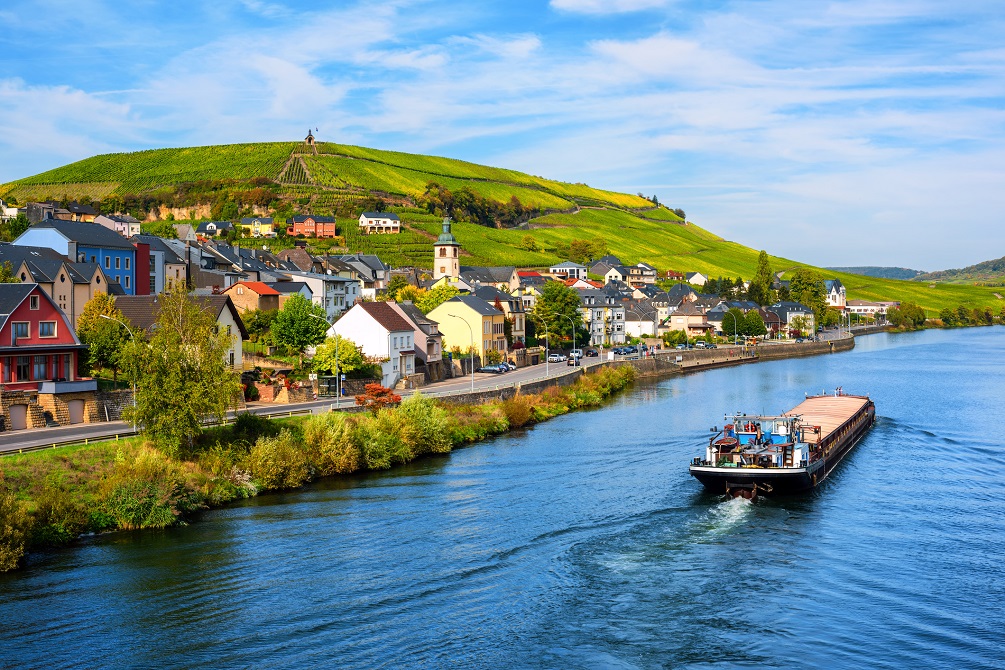
Luxembourg, or the Grand Duchy of Luxembourg, is one of the smallest countries in the world. But it packs a lot of charm.
Most Luxembourg is forested, so nature enthusiasts will not be short of things to do. In the Luxembourg Ardennes, there are many stunning nature parks to visit and natural wonders to savor.
History buffs can find some thrill and adventure in Luxembourg as well by exploring medieval castles. You can find these perched on forested hills throughout the country’s northern third.
If you like museums, you’ll be glad to know there are over 60 in the country. A museum walking tour is a great way to learn about Luxembourg’s fascinating history.
Luxembourg is historically a rural country. Its capital city, Luxembourg, is a medieval old town with modern architecture and charming remnants of the Middle Ages. The city’s ancient Saxon name is Lucilinburhuc (‘Little Fortress’).
The Grand Duchy boasts the honor of being one of the first countries to be proclaimed the European Capital of Culture on two separate occasions.
Luxembourg is a secular country, but most of its citizens are Roman Catholic. There are three official languages: Luxembourgish, German, and French.
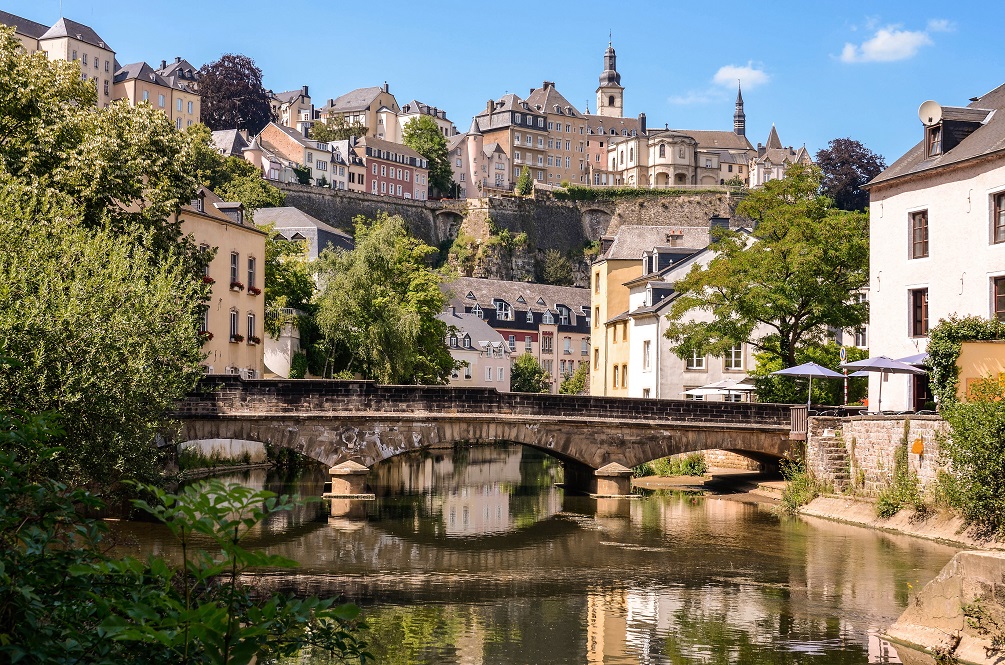


Found at the heart of Europe, Luxembourg is bounded by Germany on the northeast and east, Belgium on the west and north, and France on the south.
The Ardennes Mountains, which lie mainly in Belgium, occupy the northern third of Luxembourg.
This area is known as the Oesling (Ösling). It comprises hills, low mountains, and castles perched on forested hills.
The Oesling is sparsely populated; Wiltz is the only town in this area.
The southern regions of Luxembourg, the Bon Pays (or Gutland) have various geographical features, including a flat sandstone formation, rough terrain, and dense forests.
Most of the population lives here, and it’s where the capital city, Luxembourg, and industrial cities such as Esch-Sur-Alzette are located.
The Alzette River winds through the Bon Pays, creating picturesque sights against a backdrop of the country’s medieval-style buildings. Luxembourg is located beside the Alzette River.
A great beech forest, the Müllerthal, lies in the east-central region of the Bon Pays. This part is also marked by a sandstone area.
The Our, Sûre, and Moselle rivers form the eastern border between Germany and Luxembourg.
The Moselle River, which flows through north-central Luxembourg, has deep gorges that cut through the country’s forested hills.
Luxembourg’s vineyards are on the slopes of the Moselle River Valley. This area is known as ‘Little Riviera’ because it receives a significant amount of sunshine.
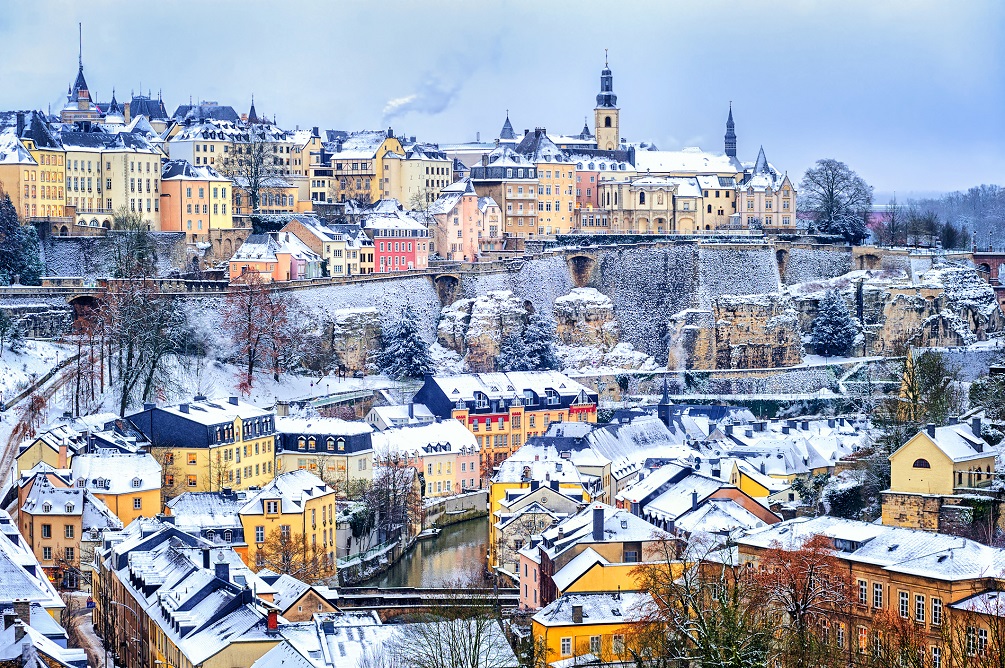


Luxembourg enjoys a temperate climate. There are rarely any weather extremes because the sea’s influence moderates temperatures. Summers are warm and winters are cool.
The forested northern regions are slightly colder and have higher humidity than the south.
The months with the most pleasant weather are from May to Mid-October. This is the best time to visit Luxembourg for a summer vacation. May and June get the most sun, while July and August are the warmest months.
Luxembourg often experiences its own ‘Indian Summer’ that occurs in September and October.
The average temperatures in Luxembourg city range from roughly 0.7 °C (33 °F) in January to about 17 °C (63 °F) in July. Both ranges are slightly lower in the Oesling.
The end of the year is marked by dry, cold, and snowy weather. This is the best time to take part in festive celebrations.
Rainfall is greater in the Oesling compared to the Bon Pays. The southwest and southeast regions receive about 685-1000 mm (27-40 inches).
The valley of the Moselle River has a gentler, sunnier climate than the rest of the country.
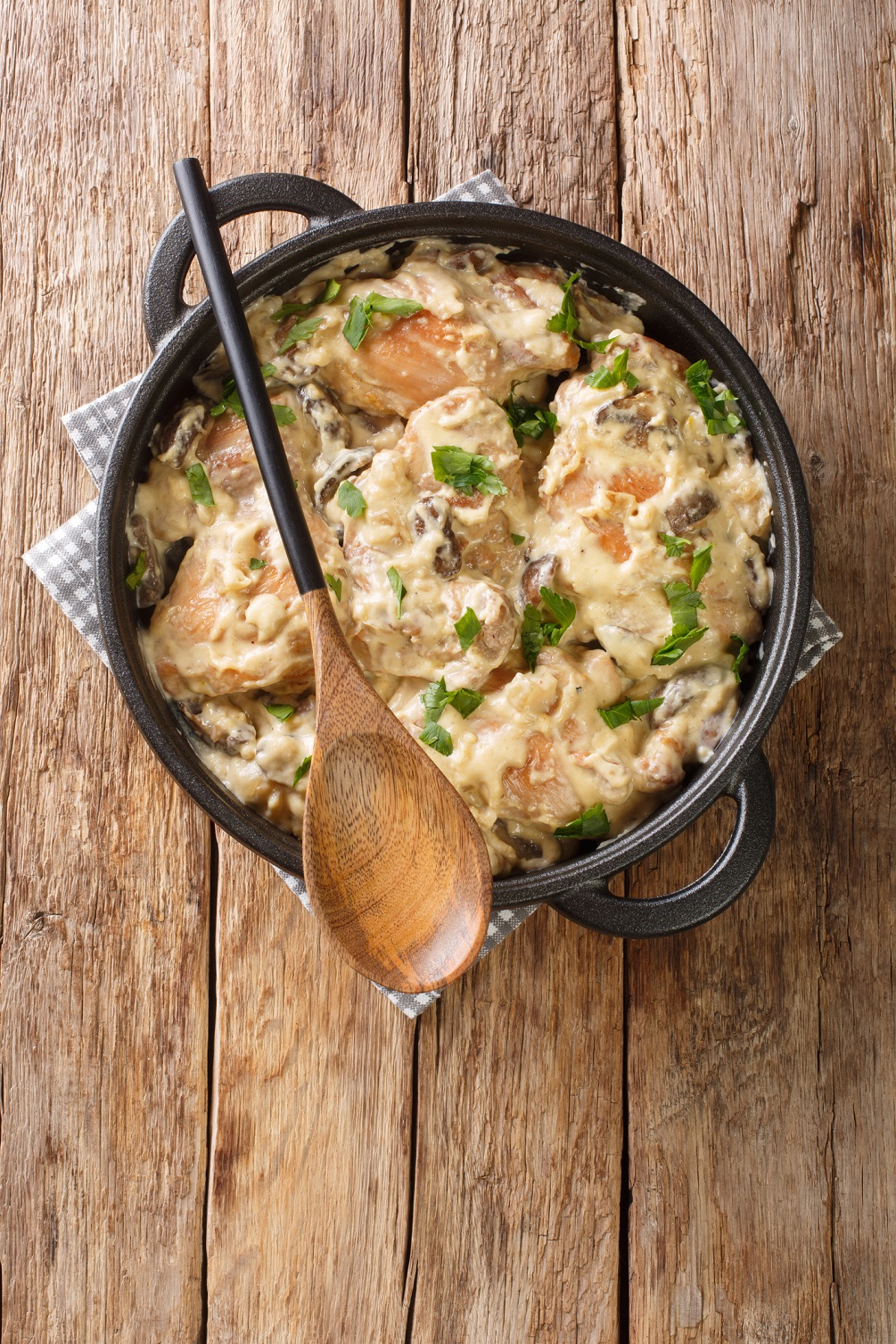


Geography and immigration have had a great impact on the Grand Duchy’s popular cuisine. Particularly impactful are the cuisines of France and Germany, and Portuguese and Italian immigrants.
Luxembourg’s cuisine is hearty, flavourful, and apt for indulging.
Traditional meals reflect the country’s farming heritage, often comprising meat, potatoes, and dashes of cream.
The national dish of Luxembourg is Judd mat Gaardebounen, smoked collar pork served with broad beans. It also one of Luxembourg’s most traditional meat dishes.
Despite its landlocked position, Luxembourg harvests trout, pike, and crayfish from freshwater. F’rell Am Rèisleck is a popular fish dish you should taste. It comprises fried trout, Riesling wine, shallots, and Creme Fraiche.
Other popular meals include Gromperekichelcher (Crispy fried potato cakes or fritters), Paschtéit (puff pastry stuffed with creamy mushroom and chicken), and Rieslingspaschteit (meat pie).
Quetschentaart is an open plum tart you should try if you’re looking for a delicious treat.
During the game season (October to December), you can enjoy Huesenziwwi, which is a hare served with noodles, cabbage, and a glass of wine.
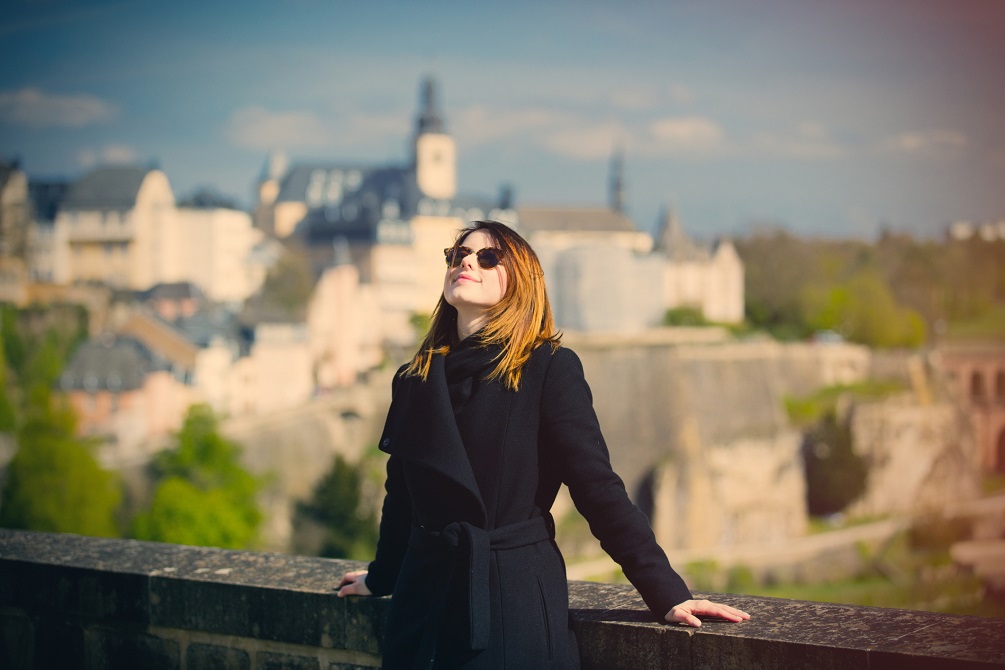


What you pack for your vacation in Luxembourg will be heavily influenced by the time of year you visit. The activities you plan to do can also help you decide what to wear in the Grand Duchy.
In winter, it’s best to have a warm jacket, a woolen hat and gloves, and boots with a thick sole. For a summer trip, you’ll need breathable clothing for the daytime and a light sweater at night.
When visiting high-end restaurants, you’ll need to dress up, which means no jeans. Outside of restaurants, smart-casual and streetwear are acceptable.
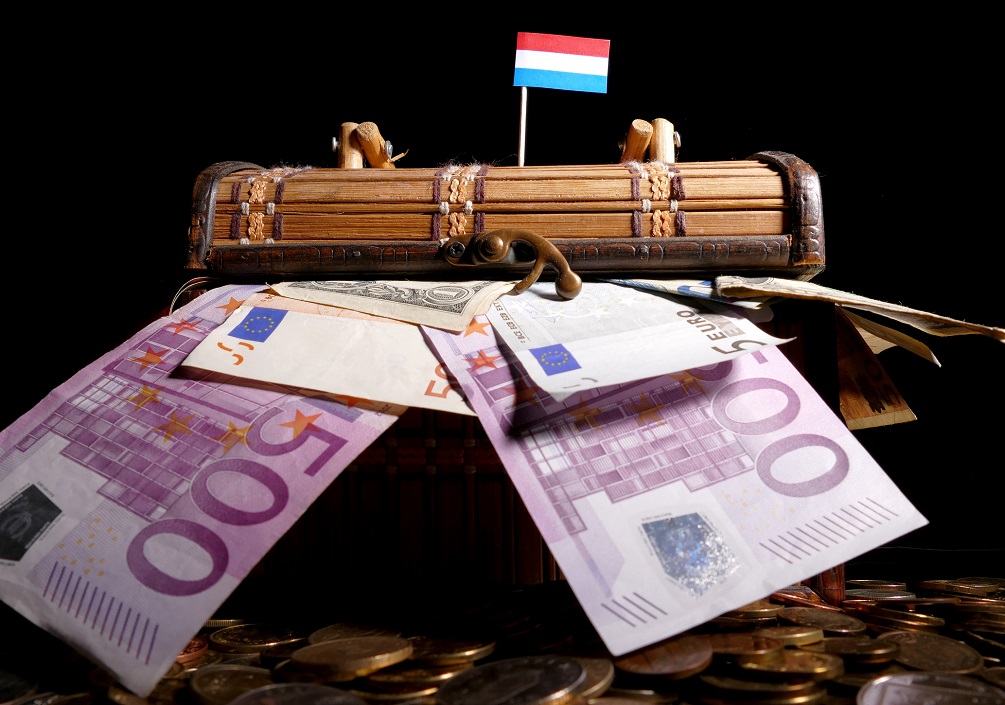


Luxembourg’s national currency is the euro (EUR); one euro is subdivided into 100 cents.
The euro has banknotes available in denominations of 5, 10, 20, 50, 100, 200, and 500. However, not all notes are used, specifically the 200 and 500. 1 and 2 euro coins are also available. Cents come in denominations of 1, 2, 5, 10, 20, and 50 coins.
The 200 and 500 EUR notes are seldom used or accepted at shops and restaurants, so it’s best to carry small bills.
There are plenty of ATMs around the country, which you can access 24/7.
You can convert your foreign currency at local banks and certified exchange offices.
Most credit cards (VISA, MasterCard, etc.) are widely accepted at stores and restaurants.
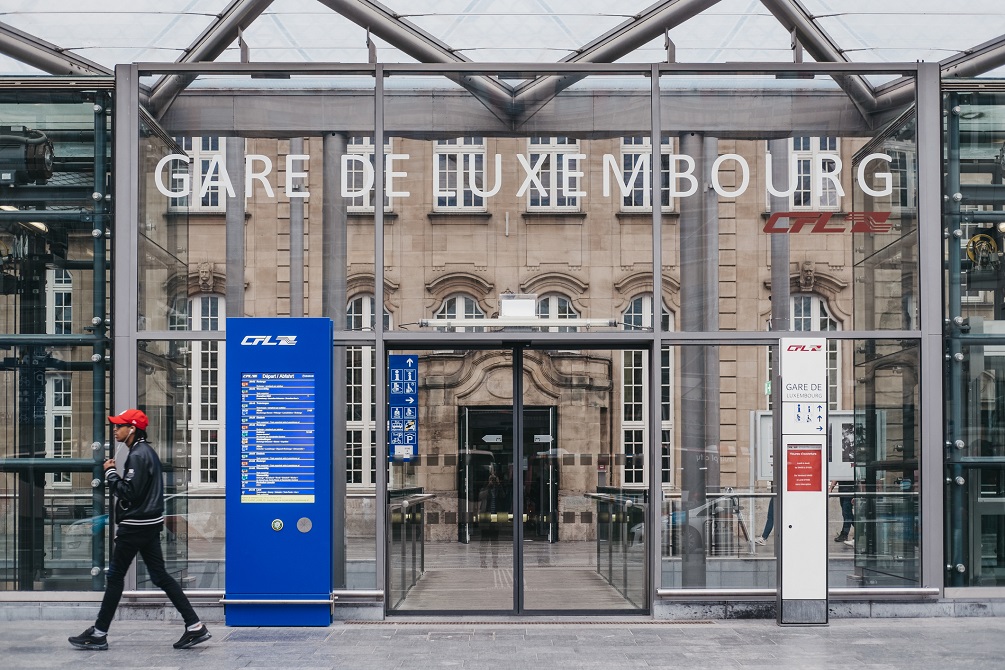


The language spoken by the native inhabitants of the Grand Duchy is Luxembourgish (Lëtzebuergesch). It’s also the national language and a German dialect that contains several French terms and sayings.
French and German are the two other official languages spoken in administrative and judicial settings, along with Luxembourgish.
Other languages spoken in the country include English, Italian, Spanish, and Portuguese.
While English is widely spoken by Luxembourgers, knowing the local language can make navigating the Grand Duchy easier. Here are some common Luxembourgish words and phrases, and their pronunciations, to keep in mind for your trip:
- Hello – Moiën (Moyen)
- Good afternoon – Mëtteg (Muttech)
- Good evening – Gudden oowend (Gooden oovend)
- Goodbye – Avuar/Eddi (Avwar/eddi)
- Yes/No – Joo/Nee (Joo/Nay)
- Thank you – Merci (Mersee)
- Where is x? – Wou ass…? (Vo ass x?)
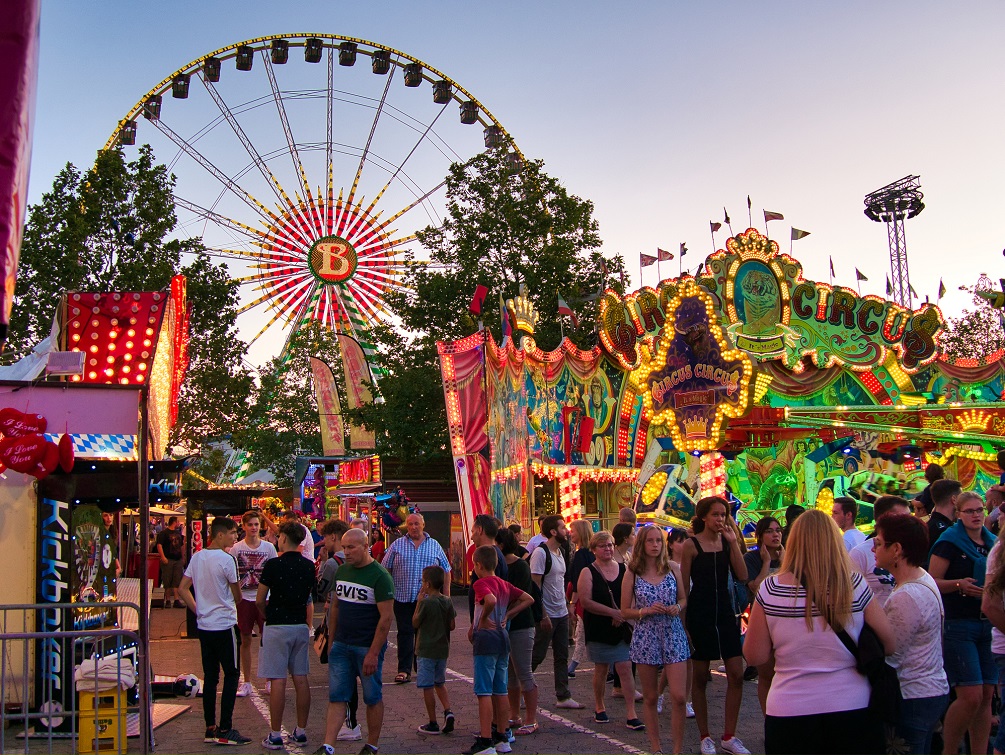


Several civilizations have left their cultural imprint on Luxembourg. Some of the most influential groups include the Celts and the Ligurians and the Romans from Italy.
The culture of Luxembourgers is highly intertwined with that of its neighbors. Despite the French and German influence, they have kept their folk traditions.
While over 50% of the population are ethnic Luxembourgers, about 16% are Portuguese. Other minority groups include French, Italians, Belgians, and Germans.
A large majority of the population is Roman Catholic. A small portion of Luxembourg’s native citizens is Protestants, Jews, and Muslims.
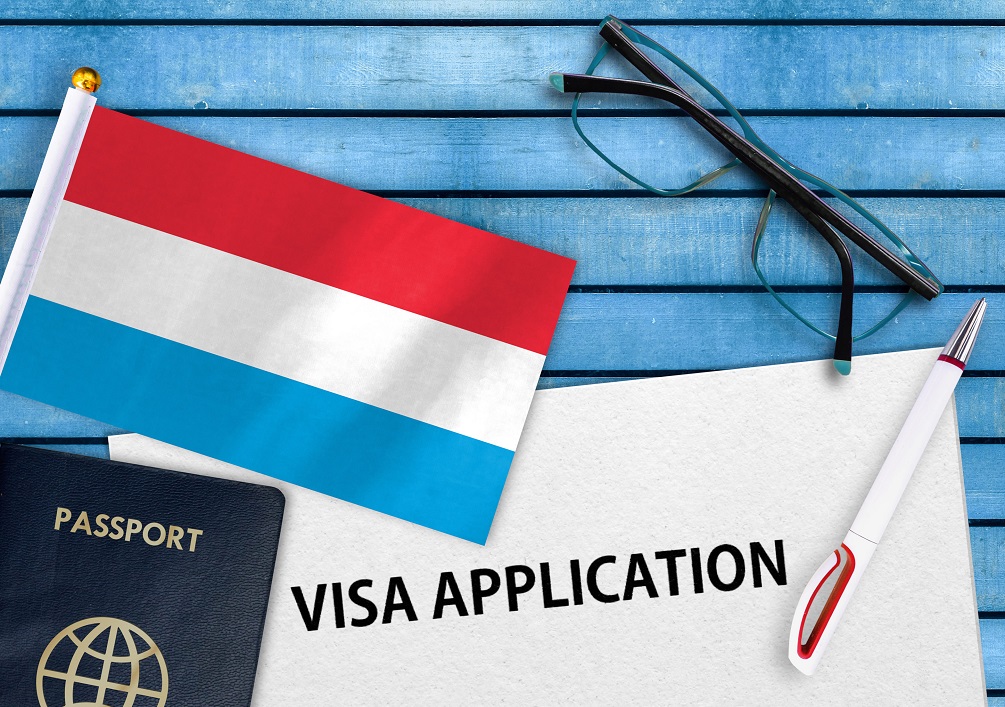


British nationals aren’t required to apply for a visa before traveling to Luxembourg.
You can remain within the country for up to 90 days. This applies to all countries within the Schengen area. If you plan on traveling to other countries in the Schengen area, ensure your itinerary is planned for a maximum of 90 days.
If you want to stay longer in the country, you’ll need to meet the Luxembourg government’s entry requirements. Contact the Luxembourg embassy to find out what kind of visa you can get.
Border control officials may require you to show proof of a return or onward travel ticket. You may also have to prove that you have sufficient funds for the duration of your stay in Luxembourg.
Your passport should not be older than 10 years. It must also be valid for at least three months after your expected departure date from Luxembourg.
Make sure your passport is stamped at border control before entering the country. This will ensure border control officials at your next destination don’t assume you’ve overstayed your 90 days.
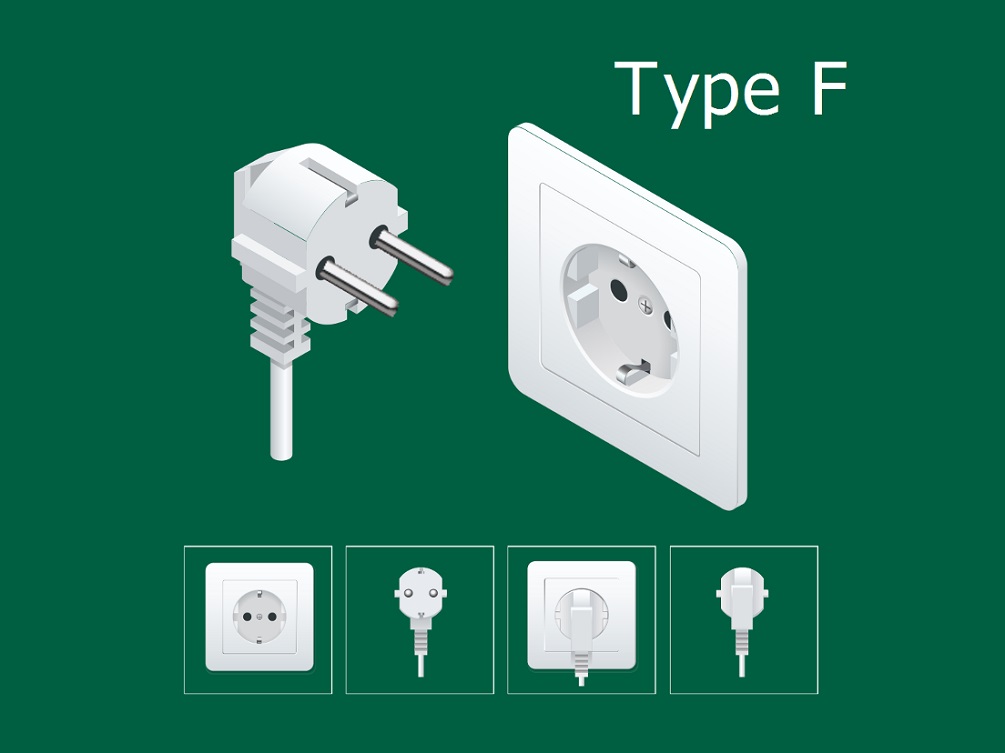


Luxembourg has Type F (circular with two round pins and two earth clips) power plugs and sockets.
The sockets supply a standard voltage of 230 V and a standard frequency of 50 Hz.
Ensure you bring along a convertor for devices with a lower voltage. And a universal adapter with surge protection.



Luxembourg, or the Grand Duchy of Luxembourg, is one of the smallest countries in the world. But it packs a lot of charm.
Most Luxembourg is forested, so nature enthusiasts will not be short of things to do. In the Luxembourg Ardennes, there are many stunning nature parks to visit and natural wonders to savor.
History buffs can find some thrill and adventure in Luxembourg as well by exploring medieval castles. You can find these perched on forested hills throughout the country’s northern third.
If you like museums, you’ll be glad to know there are over 60 in the country. A museum walking tour is a great way to learn about Luxembourg’s fascinating history.
Luxembourg is historically a rural country. Its capital city, Luxembourg, is a medieval old town with modern architecture and charming remnants of the Middle Ages. The city’s ancient Saxon name is Lucilinburhuc (‘Little Fortress’).
The Grand Duchy boasts the honor of being one of the first countries to be proclaimed the European Capital of Culture on two separate occasions.
Luxembourg is a secular country, but most of its citizens are Roman Catholic. There are three official languages: Luxembourgish, German, and French.



Found at the heart of Europe, Luxembourg is bounded by Germany on the northeast and east, Belgium on the west and north, and France on the south.
The Ardennes Mountains, which lie mainly in Belgium, occupy the northern third of Luxembourg.
This area is known as the Oesling (Ösling). It comprises hills, low mountains, and castles perched on forested hills.
The Oesling is sparsely populated; Wiltz is the only town in this area.
The southern regions of Luxembourg, the Bon Pays (or Gutland) have various geographical features, including a flat sandstone formation, rough terrain, and dense forests.
Most of the population lives here, and it’s where the capital city, Luxembourg, and industrial cities such as Esch-Sur-Alzette are located.
The Alzette River winds through the Bon Pays, creating picturesque sights against a backdrop of the country’s medieval-style buildings. Luxembourg is located beside the Alzette River.
A great beech forest, the Müllerthal, lies in the east-central region of the Bon Pays. This part is also marked by a sandstone area.
The Our, Sûre, and Moselle rivers form the eastern border between Germany and Luxembourg.
The Moselle River, which flows through north-central Luxembourg, has deep gorges that cut through the country’s forested hills.
Luxembourg’s vineyards are on the slopes of the Moselle River Valley. This area is known as ‘Little Riviera’ because it receives a significant amount of sunshine.



Luxembourg enjoys a temperate climate. There are rarely any weather extremes because the sea’s influence moderates temperatures. Summers are warm and winters are cool.
The forested northern regions are slightly colder and have higher humidity than the south.
The months with the most pleasant weather are from May to Mid-October. This is the best time to visit Luxembourg for a summer vacation. May and June get the most sun, while July and August are the warmest months.
Luxembourg often experiences its own ‘Indian Summer’ that occurs in September and October.
The average temperatures in Luxembourg city range from roughly 0.7 °C (33 °F) in January to about 17 °C (63 °F) in July. Both ranges are slightly lower in the Oesling.
The end of the year is marked by dry, cold, and snowy weather. This is the best time to take part in festive celebrations.
Rainfall is greater in the Oesling compared to the Bon Pays. The southwest and southeast regions receive about 685-1000 mm (27-40 inches).
The valley of the Moselle River has a gentler, sunnier climate than the rest of the country.



Geography and immigration have had a great impact on the Grand Duchy’s popular cuisine. Particularly impactful are the cuisines of France and Germany, and Portuguese and Italian immigrants.
Luxembourg’s cuisine is hearty, flavourful, and apt for indulging.
Traditional meals reflect the country’s farming heritage, often comprising meat, potatoes, and dashes of cream.
The national dish of Luxembourg is Judd mat Gaardebounen, smoked collar pork served with broad beans. It also one of Luxembourg’s most traditional meat dishes.
Despite its landlocked position, Luxembourg harvests trout, pike, and crayfish from freshwater. F’rell Am Rèisleck is a popular fish dish you should taste. It comprises fried trout, Riesling wine, shallots, and Creme Fraiche.
Other popular meals include Gromperekichelcher (Crispy fried potato cakes or fritters), Paschtéit (puff pastry stuffed with creamy mushroom and chicken), and Rieslingspaschteit (meat pie).
Quetschentaart is an open plum tart you should try if you’re looking for a delicious treat.
During the game season (October to December), you can enjoy Huesenziwwi, which is a hare served with noodles, cabbage, and a glass of wine.



What you pack for your vacation in Luxembourg will be heavily influenced by the time of year you visit. The activities you plan to do can also help you decide what to wear in the Grand Duchy.
In winter, it’s best to have a warm jacket, a woolen hat and gloves, and boots with a thick sole. For a summer trip, you’ll need breathable clothing for the daytime and a light sweater at night.
When visiting high-end restaurants, you’ll need to dress up, which means no jeans. Outside of restaurants, smart-casual and streetwear are acceptable.



Luxembourg’s national currency is the euro (EUR); one euro is subdivided into 100 cents.
The euro has banknotes available in denominations of 5, 10, 20, 50, 100, 200, and 500. However, not all notes are used, specifically the 200 and 500. 1 and 2 euro coins are also available. Cents come in denominations of 1, 2, 5, 10, 20, and 50 coins.
The 200 and 500 EUR notes are seldom used or accepted at shops and restaurants, so it’s best to carry small bills.
There are plenty of ATMs around the country, which you can access 24/7.
You can convert your foreign currency at local banks and certified exchange offices.
Most credit cards (VISA, MasterCard, etc.) are widely accepted at stores and restaurants.



The language spoken by the native inhabitants of the Grand Duchy is Luxembourgish (Lëtzebuergesch). It’s also the national language and a German dialect that contains several French terms and sayings.
French and German are the two other official languages spoken in administrative and judicial settings, along with Luxembourgish.
Other languages spoken in the country include English, Italian, Spanish, and Portuguese.
While English is widely spoken by Luxembourgers, knowing the local language can make navigating the Grand Duchy easier. Here are some common Luxembourgish words and phrases, and their pronunciations, to keep in mind for your trip:
- Hello – Moiën (Moyen)
- Good afternoon – Mëtteg (Muttech)
- Good evening – Gudden oowend (Gooden oovend)
- Goodbye – Avuar/Eddi (Avwar/eddi)
- Yes/No – Joo/Nee (Joo/Nay)
- Thank you – Merci (Mersee)
- Where is x? – Wou ass…? (Vo ass x?)



Several civilizations have left their cultural imprint on Luxembourg. Some of the most influential groups include the Celts and the Ligurians and the Romans from Italy.
The culture of Luxembourgers is highly intertwined with that of its neighbors. Despite the French and German influence, they have kept their folk traditions.
While over 50% of the population are ethnic Luxembourgers, about 16% are Portuguese. Other minority groups include French, Italians, Belgians, and Germans.
A large majority of the population is Roman Catholic. A small portion of Luxembourg’s native citizens is Protestants, Jews, and Muslims.



British nationals aren’t required to apply for a visa before traveling to Luxembourg.
You can remain within the country for up to 90 days. This applies to all countries within the Schengen area. If you plan on traveling to other countries in the Schengen area, ensure your itinerary is planned for a maximum of 90 days.
If you want to stay longer in the country, you’ll need to meet the Luxembourg government’s entry requirements. Contact the Luxembourg embassy to find out what kind of visa you can get.
Border control officials may require you to show proof of a return or onward travel ticket. You may also have to prove that you have sufficient funds for the duration of your stay in Luxembourg.
Your passport should not be older than 10 years. It must also be valid for at least three months after your expected departure date from Luxembourg.
Make sure your passport is stamped at border control before entering the country. This will ensure border control officials at your next destination don’t assume you’ve overstayed your 90 days.



Luxembourg has Type F (circular with two round pins and two earth clips) power plugs and sockets.
The sockets supply a standard voltage of 230 V and a standard frequency of 50 Hz.
Ensure you bring along a convertor for devices with a lower voltage. And a universal adapter with surge protection.
Travel related news, information and inspirational articles and videos for travellers booking flights or holidays to Luxembourg. Ask questions about travel in Luxembourg and get answers from Luxembourg experts
NEWS
Inspiration, Information and Travel Guides
MEET THE Luxembourg EXPERTS
If you are looking to book a holiday to Luxembourg or needs some help and advice planning travel to Luxembourg then contact one of the UK based independent travel agents that specialise in Luxembourg itineraries.
FEATURED VIDEOS
Your Travel Questions Answered
Ask any travel related question and get an answer from one of our experts that will provide you with an answer from their personal experience
There is no question for this category.
